Table of Contents
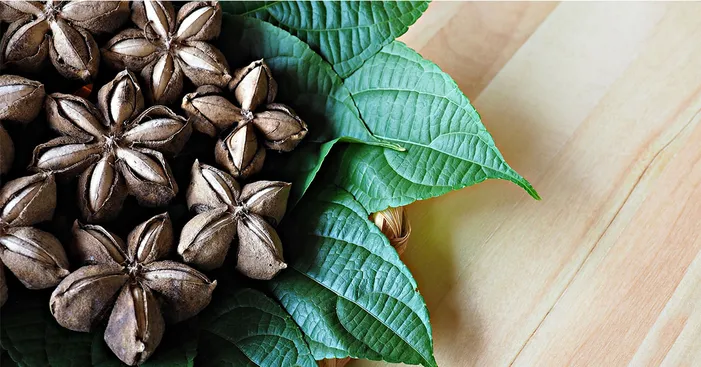
Imagine a nut so rich in omega-3 fatty acids that it rivals salmon, yet so small it could fit on the tip of your finger.
This is the sacha inchi nut, a little-known Amazonian superfood that is quickly gaining popularity for its impressive health benefits.
Grown on vines that snake up rainforest trees, sacha inchi nuts have been a staple food of indigenous people for centuries.
But it’s only recently that the Western world has begun to catch on to this nutritional powerhouse.
In this blog post, we’ll delve into the science behind sacha inchi’s impressive nutritional profile, explore its health benefits, and offer some tips on how to incorporate this exotic nut into your everyday routine.
So, let’s crack open the secrets of the sacha inchi and see what makes this little Amazonian gem so uniquely powerful.
General facts about Sacha Inchi:
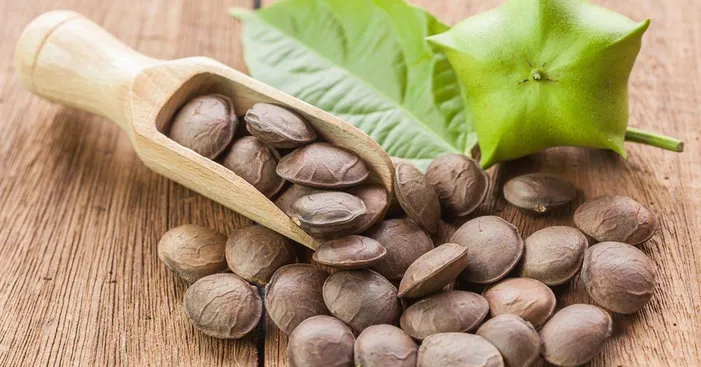
History:
In an ancient dance with time, the story of sacha inchi unfolds.
Born in the lush embrace of the Peruvian Amazon, its cultivation stretches back a staggering 3,000 to 5,000 years, cradled by the Secoyas,
Boras, and Amueshas tribes. Earthenware whispers of its existence echo from that era, adorned with its delicate form.
The Incas, too, embraced this “ínchic,” as they called it, Garcilaso de la Vega’s writings painting a vivid picture of a peanut-like seed, delicious when roasted, healing with its oil.
Yet, for centuries, its bounty remained a secret shared only among the Amazon’s children.
This changed in 1976 when the Peruvian Ministry of Agriculture, drawn by the rainforest’s riches, set its sights on sacha inchi.
Dr. Antunez de Mayolo’s meticulous studies unlocked the nut’s remarkable nutritional potential, bringing its story to the global stage, and ensuring its journey across millennia would continue.
Overview:
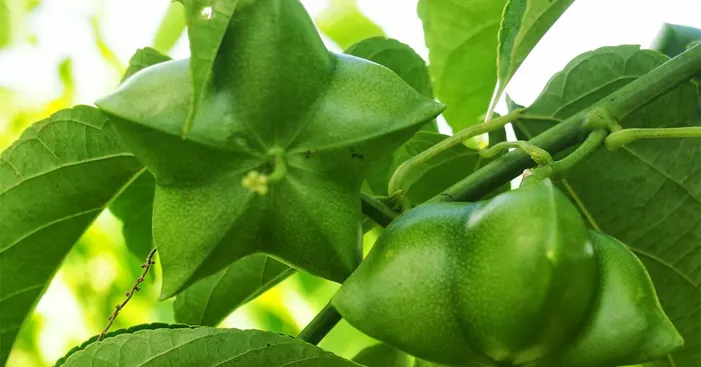
The sacha inchi, a climbing vine native to the Amazon, particularly Peru, has been a mainstay for local communities for centuries.
While attempts to cultivate it in other South American and even US regions are underway, none yet match the quality and consistency of the Peruvian source.
This prolific vine thrives in tropical forests, offering a unique advantage – it requires no deforestation for cultivation, promoting biodiversity and environmental health.
The star-shaped green fruits it produces year-round aren’t edible, but the jewel within—oval, dark-brown seeds packed with nutrients—makes up for it.
Two years after planting, a single vine can yield up to 100 fruits at a time, bursting with 400-500 seeds, harvested multiple times a year.
As the fruit ripens and browns, it splits open, revealing these treasures within, ready to be dried and enjoyed.
A single fruit can hold up to seven seeds, averaging 4-5, with each plant producing hundreds across the year.
Sacha inchi, then, is not just a delicious and nutritious gift from the forest, but a sustainable wonder, thriving in harmony with its environment.
Sacha Inchi nutritional values and health benefits:
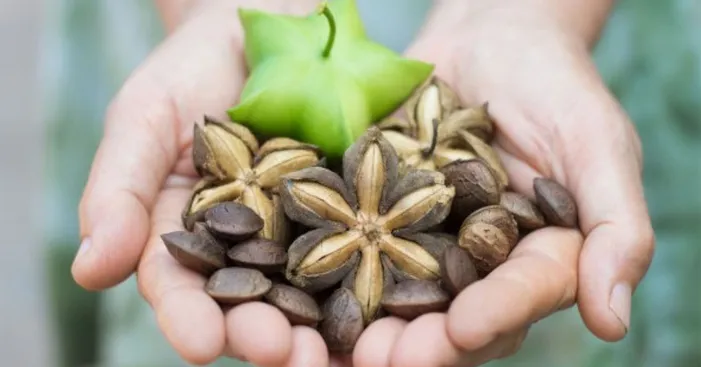
Nutritional values:
Forget tiny portions – a mere 0.4-ounce (10-gram) serving of Sacha Inchi seeds unlocks a treasure trove of nutrients including:
- Calories: 70
- Protein: 3g
- Fiber: 1g
- Carbs: 1g
- Fat: 5g
- 35 to 40% omega-6 linoleic acids.
- 45 to 50% omega-3 alpha-linolenic acids.
- A good amount of beta-carotene (β-carotene).
- High levels of vitamin E.
These tiny titans are protein powerhouses, boasting a respectable dose of fiber alongside heart-healthy fats.
But the star of the show is their abundance of unsaturated fats, the kind linked to a lowered risk of heart disease.
So, swap out saturated fats or carbs for these little gems and give your heart a reason to sing!
This rephrases the text into a more engaging paragraph format, emphasizing the impressive nutrient content of Sacha Inchi seeds in a concise and informative way.
Health benefits:
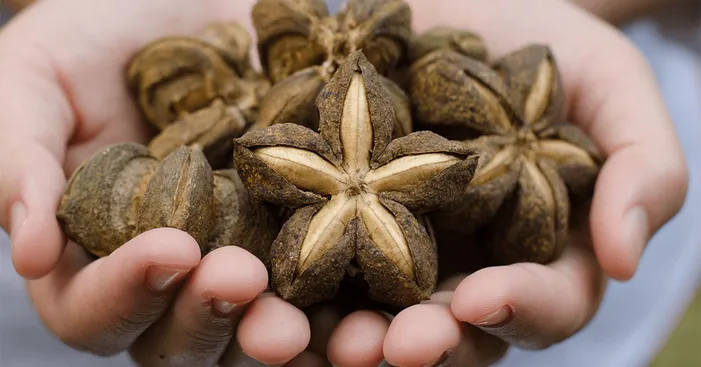
Helps with diabetes:
Omega-3s, essential fatty acids, are beneficial for people with type 2 diabetes.
They help control blood glucose levels by reducing insulin resistance.
Omega-3s also lower triglyceride levels, which are often elevated in people with diabetes.
A study in Colombia showed that adding sacha inchi, an omega-3-rich seed, to a breakfast rich in saturated fats improved insulin resistance in people who tended to have a high glycemic response after a fatty meal.
These results suggest that omega-3s may be a useful adjunct to the management of type 2 diabetes.
They may help reduce the risk of diabetes-related complications such as heart disease, stroke, and blindness.
Mind-booster:
Imagine a natural mood booster and brain protector, all wrapped up in a tiny seed.
That’s the magic of Sacha Inchi, a superfood brimming with tryptophan, the feel-good hormone that combats stress and fosters well-being.
But its benefits go beyond a temporary happy boost.
Sacha Inchi’s rich omega-3s and healthy fats are like a tireless army, continuously fighting inflammation in the brain.
This translates to a lowered risk of depression, fatigue, memory problems, and even pain sensitivity.
And the goodness doesn’t stop there!
The anti-inflammatory power of Sacha Inchi extends beyond the brain, offering relief for joint pain and rheumatoid arthritis.
For an extra kick, try combining Sacha Inchi oil with ginger, another anti-inflammatory powerhouse.
So, ditch the pills and embrace the natural path to a happier, healthier you, one Sacha Inchi seed at a time.
Promotes weight loss:
Packed with fiber and boasting a low-calorie count, Sacha Inchi seeds offer a double punch for weight loss.
Their fiber content keeps you feeling fuller for longer, reducing cravings and overall calorie intake.
This naturally induces a caloric deficit, prompting your body to burn fat for fuel.
This fiber-rich goodness also benefits your gut health, keeps cholesterol levels in check, and helps regulate blood sugar.
And as if that wasn’t enough, Sacha Inchi’s tryptophan content helps promote higher serotonin levels, further curbing your appetite and keeping you from reaching for unhealthy snacks.
It’s like a natural weight-management toolkit all in one tiny seed!
Reduces bad cholesterol:
While cholesterol levels alone may not hold the key to predicting cardiovascular issues, their link to dietary habits and potential genetic vulnerabilities still raises concerns.
A Peruvian pilot study published in 2011 explored the possibility of using sacha inchi oil to address this concern.
Researchers divided 24 individuals with high cholesterol into groups receiving different doses of the oil for four months.
While the findings suggested a positive impact on cholesterol levels, the authors emphasized the need for further research to solidify the efficacy and safety of sacha inchi as a cholesterol-management tool.
This highlights the ongoing efforts to find dietary solutions for cholesterol concerns, even as our understanding of their role in heart health evolves.
Other health benefits:
- Counteracts the body’s aging process.
- Protects the role of the heart and arteries.
- Benefits brain function by stimulating the formation of nerve tissue.
- Protects the role of joints.
- Regulates blood pressure.
- Effects help against various types of inflammation.
- Stimulates the formation of eye tissue.
- Has a positive effect on the maintenance of good cholesterol levels.
Precautions before using sacha inchi:

Hailed as a “superfood”, Sacha Inchi tempts with its ease of digestion and a flavor reminiscent of olive oil, but with a bonus punch of protein and omega-3s.
However, don’t be fooled by its charm.
While roasted seeds enjoyed in moderation seem well-tolerated by most, venturing into the territory of long-term supplementation or larger doses is like navigating uncharted waters.
The oil, thankfully, offers a safer alternative, capturing the nutritional essence without potential pitfalls.
But even before reaching for the oil bottle, a word of caution: Sacha Inchi’s richness in tryptophan, a mood-regulating amino acid, might clash with antidepressants or other serotonin-boosting medications, potentially triggering the rare but serious serotonin syndrome.
Additionally, lurking within uncooked seeds and leaves are hidden toxins, urging you to choose the heat-treated route for optimal safety.
So, how do we reap the rewards of this intriguing superfood without succumbing to its darker side?
The answer lies in a mindful approach.
Embrace the roasted seeds, and drizzle the oil with gusto, but leave the high-dose supplements and raw parts on the table.
Remember, wisdom is key – savor the benefits of Sacha Inchi, but always with respect for its hidden complexities.
By doing so, you can cultivate a rewarding relationship with this exotic treasure, reaping its nutritional bounty while avoiding any unwanted surprises.
Using Sacha Inchi:

Sacha Inchi, a nutritional powerhouse, bursts onto the scene in a multitude of forms, each unlocking a unique way to reap its benefits.
Craving a simple, nutty snack?
Munch on roasted seeds, their sweetness 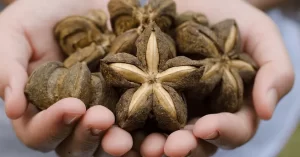 dancing on your tongue.
dancing on your tongue.
Feeling adventurous? Swap them for almonds in your salad, or weave them into the comforting embrace of granola.
Ground seeds, champions of plant-based protein, hide-in smoothies, baked goods, and energy bites, ready to fuel your day.
Even the leaves whisper secrets of vitality – dried and steeped, they transform into a soothing herbal tea, perfect for a moment of mindful escape.
And of course, there’s the oil, a golden elixir ready to drizzle over salads, smoothies, or sautéed vegetables, infusing every bite with flavor and health.
So, delve into the diverse world of Sacha Inchi and discover endless possibilities for a delicious and nourishing journey.
